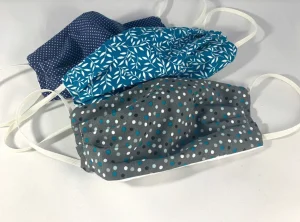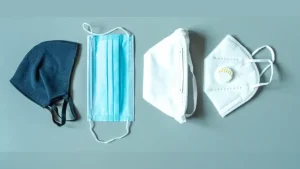Masks wearing has been more important than ever in this COVID-19 pandemic. This virus has returned in waves, where countries like Singapore have seen a surge of community cases recently. The Singapore government has recently tighten measures to prevent further spread of COVID-19. Choosing and wearing the right type of masks are of critical importance now to prevent further transmission.
On 19 May (Wednesday), Singapore’s Health Sciences Authority (HSA) published an article on ‘What you need to know about masks’. Read on more to find out the summary from this article.
How to choose your masks: Types available
Generally, masks can be classified into 2 different types: face and surgical masks.
Face mask

Face masks are made of cloth or fabric. They only act as a simple barrier in preventing the droplets from getting out to the air from the person wearing it when they talk, sneeze or cough. They act as a form of source control, and are not suitable for use in surgical or healthcare facility settings.
Choose a face mask with the following qualities:
- At least 2 to 3 layers of fabric (general rule: should not be see-through when held against light)
- Layers should preferably be made with different fabrics, including:
- Water-repellent outer layer
- Middle filter layer to remove particulates
- Absorbent inner layer to absorb droplets from wearer’s mouth
- Better filtering efficiency
- Allow for breathing
- Fitting to ensure complete nose and mouth are completely covered, down to the chin
- Do NOT choose mask with exhalation vent as this allows droplets to escape from the person wearing the mask
Surgical mask

Surgical, or medical masks, used during surgical and medical procedures. This type of mask offers protection both ways: (1) source control, (2) protecting mask-wearers from external exposure and infectious materials. In Singapore, this mask is regulated as a medical device and hence needs to undergo strict compliance and licensing requirements by HSA.
Apart from high grade protection, this mask also provides for high filtration efficiency and breathability.
To check if your surgical mask is produced by local manufactures licensed with HSA, do check out their Annex at the bottom of their article.
How to wear your masks
Now that you know what are the different types of masks available, you need to know how to wear them. You may have seen many people wearing their masks with their nose exposed, or simply pulled down to their chins. In order for masks to be effective, they should cover both your nose and mouth. They should also be removed properly and completely, without contacting your nose or mouth.
Watch the video by Singapore’s Ministry of Health (MOH) below to find out more on how to correctly wear and remove your masks:
